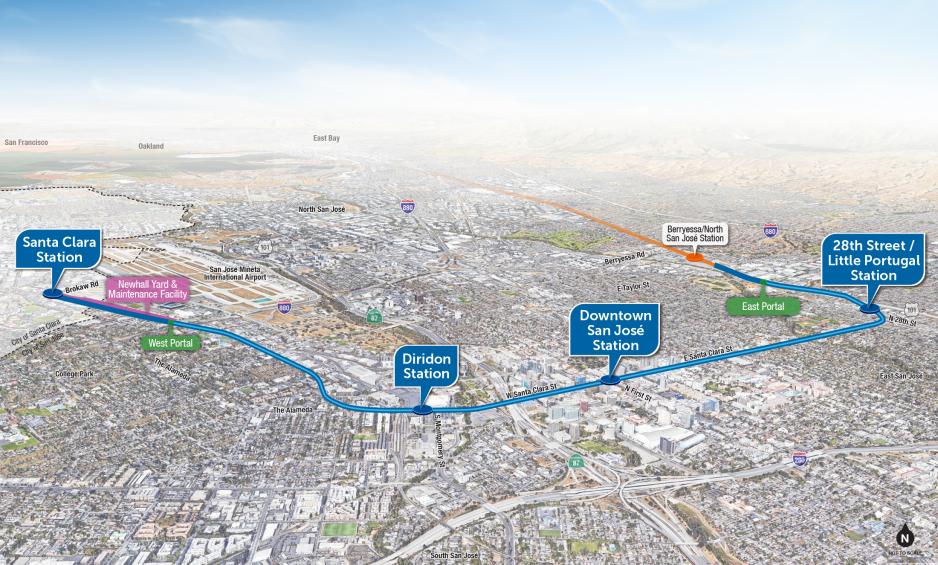VTA has launched a Microsite for the BART Silicon Valley Phase II Extension Project. Check it out for the latest Project information, updates, construction notices, and more!
VTA's BART Silicon Valley Phase II Extension (BSVII) Project is a six-mile, four-station extension of the regional BART system from Berryessa/North through downtown San José to the City of Santa Clara, serving 55,000 weekday riders. The BSVII Project includes a six-mile extension from the existing Berryessa/North San José BART Station, with three underground station platforms, one ground-level station, and a new maintenance and storage facility.
VTA's BART Silicon Valley Phase II Extension (BSVII) Project is a six-mile, four-station extension of the regional BART system from Berryessa/North through downtown San José to the City of Santa Clara, serving 55,000 weekday riders. The BSVII Project includes a six-mile extension from the existing Berryessa/North San José BART Station, with three underground station platforms, one ground-level station, and a new maintenance and storage facility.
Timeline
Title
Alternatives Analysis
Phase Date Range
-
Title
Environmental Clearance
Phase Date Range
-
In a unanimous vote Thursday evening, April 5, VTA Board members approved the staff recommendation for VTA’s BART Silicon Valley Phase II Extension Project. The Board approved a single-bore tunneling... Read more
On April 26, 2018, after review and consideration of VTA's BART Silicon Valley Phase II Extension (Project) Final SEIR and related Findings, Statement of Overriding Considerations, and MMRP adopted by VTA on April 5, 2018, the BART Board of Directors accepted the Project SEIR; adopted VTA's Findings and Statement of Overriding Considerations for the SEIR; and, pursuant to the Comprehensive Agreement, approved the Project.
VTA was notified today by the Federal Transit Administration (FTA) that a Record of Decision (ROD) has been issued for the next six miles of VTA’s BART Silicon Valley Extension into downtown San Jose... Read more
Title
Design and Engineering
Phase Date Range
-
VTA achieved two critical milestones for the BART Phase II Project being the first transit agency in the nation to submit an application for $1.735 billion through the Federal Transit Administration’s...Read more
The BART Silicon Valley Extension into Downtown San Jose and Santa Clara is moving forward with two critical milestones achieved this week. The Project has advanced to the final step in the... Read more
Title
Construction
Phase Date Range
-
As of Fall 2023, this is the current estimated timeline for commencement of major construction activities. This timeline is approximate and will be updated as more information becomes available.
